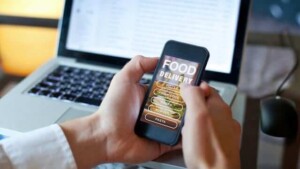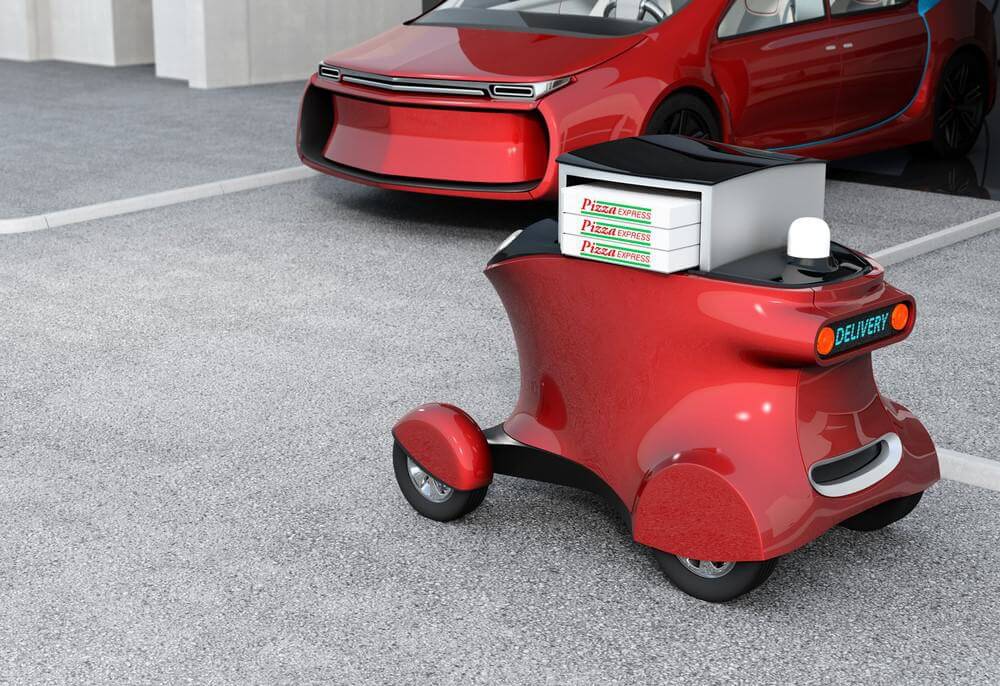The role of technology in the hospitality industry has been hotly contested for some time. While inventory and data management systems have become commonplace because of their ability to quickly and easily cross reference disparate sources of information, other technologies that could potentially take the place of human workers have seen slower adoption rates; however, a confluence of events over the past several years has led to changing attitudes around technology solutions.
The most significant shift in attitude has come as a result of people’s overall comfort with ordering food and beverage through apps and online, mostly for home delivery. As $15 minimum wage initiatives began to sweep across the country and large markets such as San Francisco lurched into an industry labor crisis, business owners turned to tech in an effort to decrease labor costs and improve efficiency. In recent years, various sectors of business have increasingly embraced technology as a way to help speed service in food outlets while increasing customization, participation, and even promote health tracking initiatives. Looking to the future, industry insiders and many of JGL’s clients have already started to discuss the “new normal” and what role contactless technologies will play when social distancing is relaxed and outlets reopen.
In this blog, we will lay out some of the most common guest facing technologies currently in use across multiple business sectors, as well as some up and coming initiatives that JGL is particularly excited about. There are also many interesting back of house and sustainability focused initiatives in the works, but alas, those are for another blog.
The Common
There are a handful of technologies that are now commonplace, especially in both the B&I and Cultural markets. These are the systems that you should have in operation now if your campus has an F&B program which services anywhere upwards of 100 guests per day. You should have a website with separate pages dedicated for both retail food and catering. Your F&B provider should ideally control these pages and be responsible for updating them regularly. These pages should be easy to find from the site’s primary landing page. Café and catering menus should always be up to date, and event rental pages should feature professional photos of events in progress, as well as information such as dimensions of spaces, amenities, and capacity limits. Many Operators, especially those who specialize in B&I, have also built proprietary health and wellness interconnectivity between their online systems and culinary operations, including nutritional data and meal planning, educational tools, habit training programs, and even access to company dieticians.
Digital signage has also become universal in both B&I and Cultural accounts. Digital signage is frequently tied into a central computer system so that it can be updated easily on a daily basis, though systems that work over Wi-Fi or even with a flash drive are also prevalent. In addition to aesthetic benefits, digital signage reduces service times by helping guests to make decisions before they get to the front of the line.
Desktop and app-based pre-order options are quite customary and becoming more so every day. Patrons will place and pay for their orders on their computers or phones, then pick them up from a pre-determined location to avoid long wait times. While there are many cultural institutions which use pre-order for guests, they are particularly popular with staff populations across all sectors of business. Self-order kiosks and self-pay stations are becoming popular as a way to reduce labor costs and/or to supplement traditional cashiers during peak visitation times. Guests typically either order their food from the kiosk and pick it up when a digital sign tells them it is ready, or in some cases, they take a number to display on their table and their order is brought to them, though this scenario can require significantly more labor needs on the part of the Operator and therefore higher costs.
These systems are the base level of current tech offerings and most Operators should be utilizing them now. If yours is not, you should talk with them about the benefits of investing in such systems or pursue such investment in your next RFP process.

Less Common
Now we look at some systems which are currently in circulation but are far less prevalent and perhaps only applicable in specific situations.
In some high-volume locations such as science museums, enterprising Operators are utilizing tray scanning technology. A guest moves through the line and places their selected items on a tray, then places the tray under a self-checkout device which scans the entire tray at once and charges the guest accordingly, significantly decreasing checkout time and through put of the servery.
An issue common to many of our client’s B&I call centers is that employees commonly have only 30-minute lunch breaks and limited budgets, so they don’t have the time or financial resources to order take-out or wait in a busy café line. Some locations are currently running pilot programs using food locker systems placed strategically around office buildings. Employees can pre-order their meal and when their break begins, go to a locker number which they have been given, enter a code and retrieve their meal. Another system in testing for these offices uses a refrigerated case which has pressure sensitive pads under each item, similar to a hotel mini bar. Items are stocked and an employee scans their badge or enters a code to open the unit, then is charged for whatever is removed. Unlike traditional vending machines, such a system has the expanded capability to offer freshly made, temperature controlled full meals.
Even for more traditional vending options, new technologies are enhancing guest experience. Electronic sensors monitor inventory and send a notification to restock the machine before items run out. Many machines can also display nutritional information.
I for one welcome our robot overlords, especially when they make me lunch. Robot vending is starting to make its way into accounts with customizable salad or liquid nitrogen ice cream making machines in relatively wide circulation. Proprietary systems that roast, grind and brew coffee one cup at a time are in use, while the utilization of robot food delivery drones is becoming more common on college campuses. Food grade 3D printing is also being used in select locations, from 3D sugar sculptures used as garnish to pancakes in the shape of dinosaurs. I just want to say that one more time. Dinosaur pancakes are a thing.

Experimental
Now we look ahead to what could be the next big tech developments in F&B. One of the biggest hurdles faced by many Cultural institutions, which are notoriously averse to copious signage, is wayfinding. JGL often recommends that cafes are placed as close to the front entrance of a new building as possible so that they have maximum visibility. Food service outlets located deeper within a structure often suffer from lack of foot traffic and little or no directional signage guiding guests to them. The more expansive the building, the bigger a problem this can be, especially at botanical gardens and large museums with confusing layouts. Several tech firms are currently working on GPS based systems which will allow patrons to use turn by turn directions on their phones to locate outlets within larger structures. Such systems will, hopefully, eventually be integrated into the organization’s proprietary app so that a guest could open the app, search for dining options, then be led directly to the outlet with GPS directions. Though JGL is aware of several such systems in development, we have not seen any in use at this time.
One of the most exciting examples of burgeoning foodservice-oriented tech that JGL has seen revolves around RFID technology which uses radio waves to track tagged items. We have seen a very limited application of hybrid-service models where a guest orders from a counter and is given a small plastic RFID tag, then is free to seat themselves anywhere in the designated seating area. RFID readers mounted in the ceiling display on the server’s screen where in the room each RFID tag is located so that the server can find each guest quickly and easily, even if they move around several times. An even more ambitious version of this system is also in development involving kiosk ordering. With this version, the RFID tag is printed on the guest’s receipt, so no plastic tag is necessary. This technology has the potential to embrace the benefit of cooking and delivering food to order without the dramatic increase in staff necessary for the traditional model of constantly circling a seating area looking for plastic number signs.
When food and beverage operations come back online, they will face a brand-new set of challenges. The traditional pressures of moving people through food outlets quickly while delivering quality offerings will compound with new challenges of trying to do all of this with minimal intrapersonal contact. Existing and new technologies are likely to be part of the solution to these issues. If you, like many of our clients, are feeling overwhelmed trying to formulate a comprehensive new food and beverage strategy before your facility reopens, we are hard at work and ready to help.

